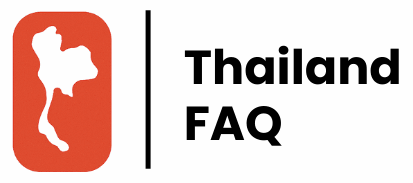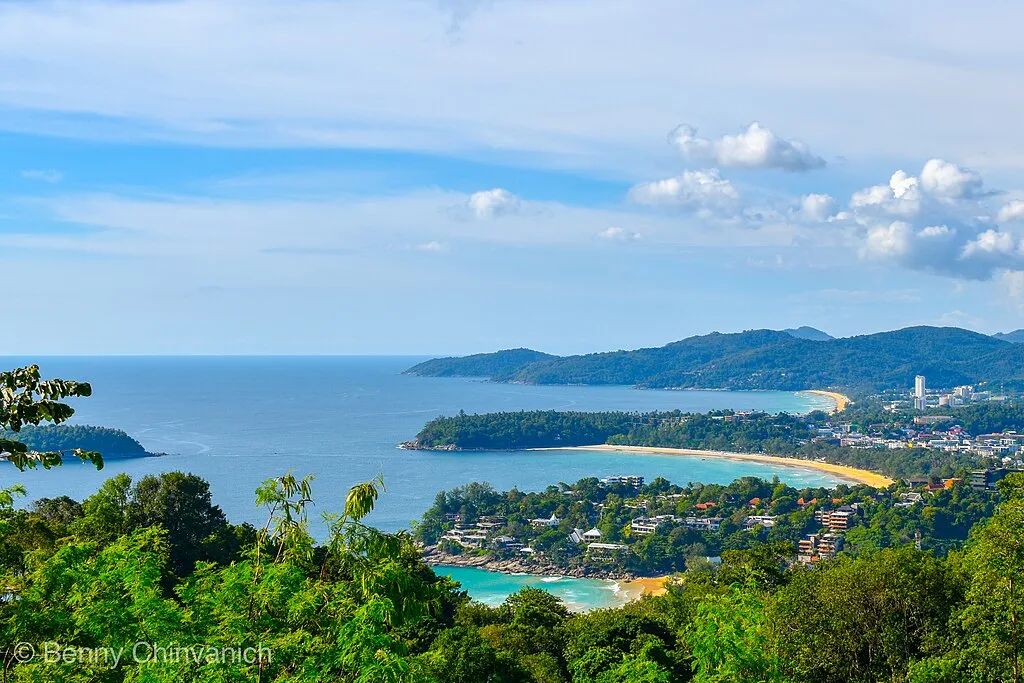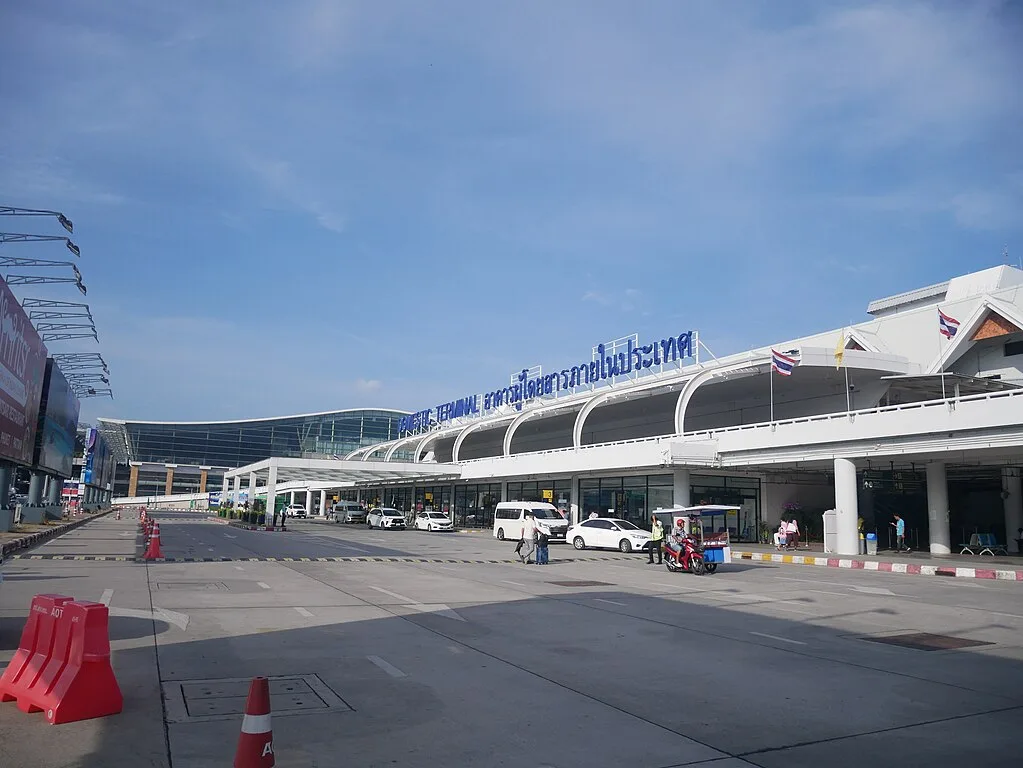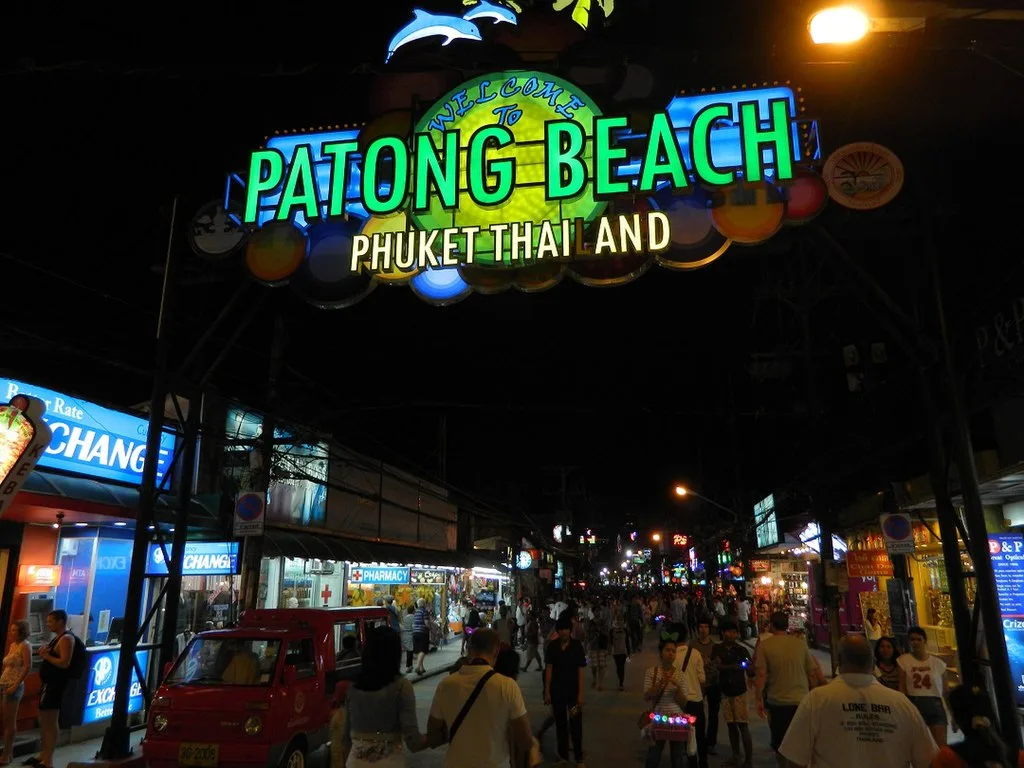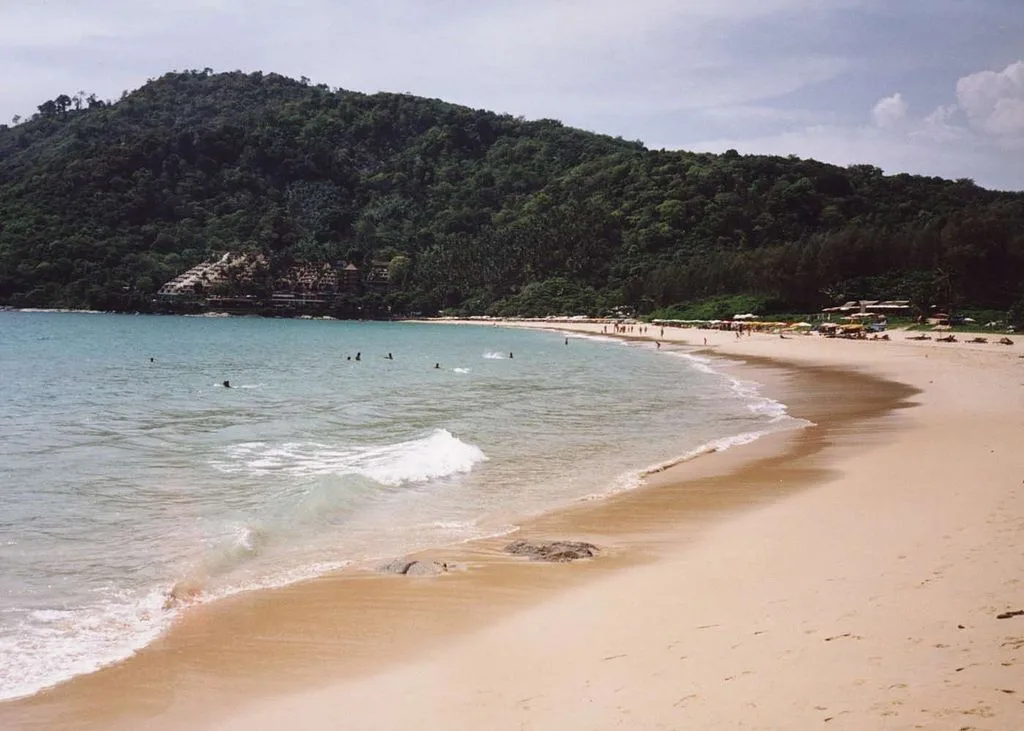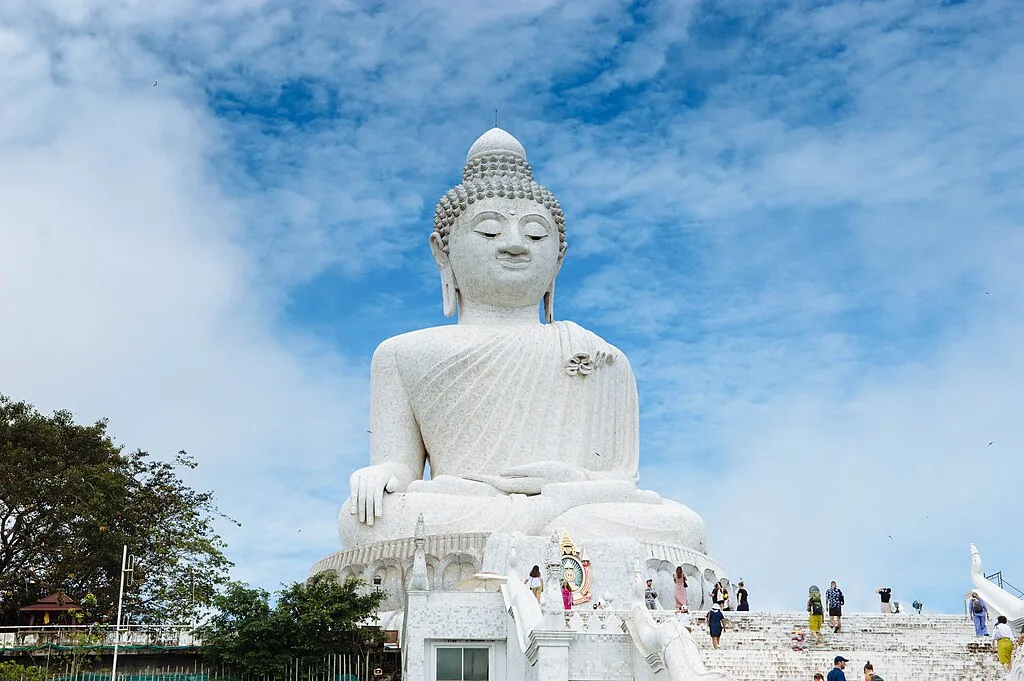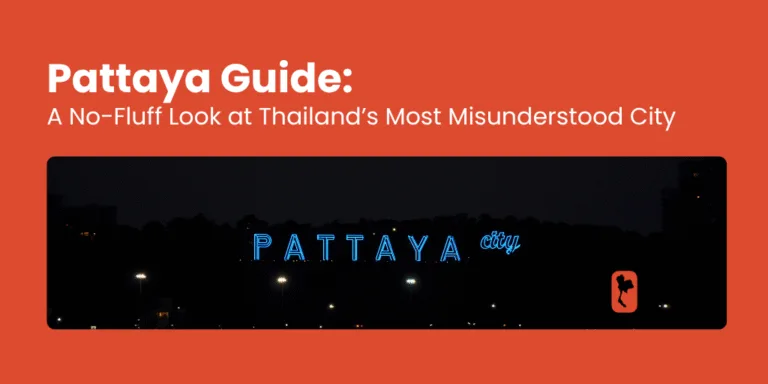It’s not just the beaches or the boat tours. It’s not even the sunsets or the scent of grilled seafood that clings to the air. Phuket moves in its own way. Slower than Bangkok, louder than Chiang Mai, and constantly shifting. Whether you’re passing through, working remotely for a few months, or thinking about staying longer, this Phuket Guide walks you through what life here actually feels like.
What Makes Phuket… Phuket? Let’s Begin the Phuket Guide
Phuket doesn’t wait for you to catch your breath. The moment you land, you’re in it. Heat presses in, the roads swirl with scooters, and someone is already offering you a taxi, a tour, or a smoothie. It’s immediate, a little chaotic, and hard to pin down.
But then something settles. You start to hear the rhythm in the chaos. Maybe it’s the sound of waves behind a row of longtail boats. Maybe it’s the call of a street vendor at dusk. Or the silence you find on a hidden beach when no one else is around.
Phuket is a contradiction. Tourist-heavy yet deeply local. Polished in some corners, raw in others. It doesn’t pretend to be one thing. And that’s exactly why some people never leave.
Getting To and Around Phuket
Phuket International Airport is the island’s main entry point, and it’s busier than you might expect. Flights come in from Bangkok, Singapore, Doha, Sydney. Immigration can be quick, or it can take over an hour. It’s a toss-up.
Once you’re outside, transport gets tricky. There’s no BTS, no MRT. Taxis don’t use meters. Grab works but isn’t cheap. Most visitors rent scooters or cars. The roads aren’t dangerous if you stay alert, but they’re unpredictable. And steep in places. Google Maps won’t tell you how hilly a shortcut really is.
If you’re here for more than a week, rent something. If you’re here long-term, buy something or befriend someone who did.
Where to Stay in Phuket
Phuket is a patchwork of towns, beach strips, and inland zones that each feel like a different country. Where you stay changes your whole experience. One beach over, and it’s a different world. Some areas hum with nightlife and tourist buzz. Others feel like sleepy villages where the same dogs nap in the same spots every afternoon.
Patong
Loud. Crowded. Never fully asleep. Patong is the island’s unofficial capital of chaos and fun. The beach is wide, the waves are gentle, and the noise? Constant. This is where you come if you want nightlife seven days a week. The infamous Bangla Road is a sensory overload of neon lights, shot specials, basslines, and tuk-tuk drivers offering anything and everything.
But for all its madness, Patong is weirdly efficient. There’s always a 7-Eleven nearby, and you’ll never struggle to find a motorbike taxi at 3am. It’s convenient. Just not quiet. If you’re here for the long term, make sure your condo has thick walls and a pool that doesn’t overlook the party strip.
Some people love it. Others can’t wait to leave. You’ll know which one you are within 48 hours.
Kata and Karon
A small step down in intensity, but still unmistakably lively. These two beach towns sit side by side and offer a more balanced version of Phuket. There’s still nightlife, but you can sleep through it. There are families, digital nomads, older couples on long vacations. A mixed crowd, but everyone seems to get along.
Kata is known for its surf scene. In the right season, the waves are just right for beginners. You’ll find surf shops, smoothie bowls, and a few wellness studios dotted around the town. Karon is more spread out, with a longer beach and slightly fewer crowds.
The infrastructure is decent. Most people rent scooters, but it’s possible to walk around, especially in Kata. Long-stayers often pick this zone because it feels like a compromise that doesn’t ask you to compromise too much.
Rawai and Nai Harn
Phuket’s southern tip has a completely different feel. Things slow down. There’s less development, fewer hotels, and way more space to breathe. The beaches are better maintained, the crowd thinner, and the vibe a bit more intentional.
Rawai has that end-of-the-road charm. You’ll find small seafood restaurants right by the water, boatmen offering island trips, and older expats having the same breakfast at the same table every morning. Nai Harn Beach is nearby and often considered one of Phuket’s most beautiful. Crystal-clear water, soft sand, and fewer jet skis. That alone makes a difference.
You won’t find a lot of big malls or flashy beach clubs here. But if you like the sound of birds in the morning and an evening beer with locals, this might be your spot. It’s not the place for tourists who want constant stimulation, but it’s perfect if you’re building a slow, quiet rhythm.
Phuket Town
Phuket Town feels like it shouldn’t be part of the same island as Patong. It’s inland, there’s no beach, and yet it’s one of the most visually striking areas. Think pastel shophouses, Portuguese colonial architecture, Chinese temples tucked between alleyways, and cafés that feel like someone curated the furniture for Instagram. It’s colorful, yes, but there’s substance here too.
This is where you come if you want culture and community. Artists, freelancers, slow travelers they gravitate here. The Sunday Night Market is probably the best on the island, and the food scene leans heavily local. Rent is cheaper, the pace is saner, and the sense of place is stronger.
You won’t get a sea view. But you might get a mural on your front door and a coffee shop downstairs that remembers your order after two visits.
Cherng Talay, Bang Tao, Laguna
Now you’re entering villa country. These areas are sleek, quiet, and meticulously maintained. If you like international schools, high-end supermarkets, and gated neighborhoods with security guards who salute you every morning, this is your zone.
Bang Tao Beach stretches for what feels like miles, and much of it is still quiet. The Laguna complex is filled with luxury resorts, manicured golf courses, and restaurants that offer imported wines and five types of quinoa. Cherng Talay has grown rapidly in the last few years. Think Scandinavian design showrooms, Pilates studios, and espresso bars that double as coworking lounges.
It’s not cheap. And some say it’s disconnected from the “real” Phuket. But if you’re here to live well, work online, and have your kids in an international school by Monday, it checks all the boxes. Just know what you’re signing up for. It’s less island life, more island suburbia. And for some, that’s exactly what they’re after.
Phuket’s Beaches: A Quick Take
There are dozens, but here’s the real deal on a few worth your time.
- Freedom Beach – Requires effort to reach but rewards you with peace and clear water.
- Nai Harn Beach – A favorite among locals and expats. Gentle waves, soft sand, calm.
- Surin Beach – Pretty, sometimes crowded, often Insta-worthy.
- Kata Noi – Tucked away, quiet, clean. Feels like a secret.
- Patong Beach – Central, convenient, but noisy and not ideal for swimming.
Note: In rainy season (May to October), some beaches become rough. Always check for red flags.
Phuket’s Food: Local, Spicy, and Surprisingly Varied
You can eat like a king here, or like a beach backpacker. It depends where you go and how curious you are.
Southern Thai food is spicier than what you’ll find in Bangkok. Think rich curries, coconut-heavy sauces, and fiery seafood dishes.
- Don’t miss kanom jeen for breakfast
- Try moo hong (slow-cooked pork) if you find it
- And if a dish looks too red to be safe, it probably is
Markets are your best bet for variety. Chillva Market and the Sunday Market in Phuket Town are great starts.
Western food exists, but prices jump. Pizza is fine. Cheese is expensive. Wine is a luxury. Learn to love fresh fruit and grilled fish, and your wallet will thank you.
Things to Do in Phuket (That Aren’t Just Beaches)
Yes, the beaches are beautiful. No one’s denying that. But once the novelty of turquoise water wears off, you’ll start wondering what else there is to do here. The good news? Phuket is layered. Touristy on the surface, sure. But dig a little and you’ll find experiences that range from deeply cultural to unexpectedly peaceful to full-blown adrenaline.
This section isn’t about “top 10 attractions” it’s about what you can actually do here once you’re done working, tanning, or sipping smoothies.
Visit Big Buddha (Even If You’re Not Into Statues)
You’ll see it from miles away. A towering white figure perched on a hilltop, quietly watching over southern Phuket. Even if you’re not normally the “temple person,” Big Buddha is worth the winding ride up.
The views alone are reason enough panoramic sweeps of Kata, Karon, Chalong Bay, and the Andaman beyond. On a clear day, it’s spectacular. On a cloudy one, it’s still good.
The site itself is quiet, respectful, and under slow construction for years now. You’ll hear the clang of hammers in the background, and maybe some chanting if you’re lucky. Dress modestly, or borrow a sarong at the entrance. No one’s strict, but the atmosphere deserves some respect.
Wander the Streets of Old Phuket Town
This is where Phuket shows a completely different side of itself. Forget beaches. Think architecture, art, and bakeries tucked into pastel-painted buildings.
Walk along Thalang Road and Dibuk Road. Stop for a coffee, or better yet, one of those oddly satisfying Thai-Portuguese egg tarts. Duck into a gallery. Take photos of the shutters, the tiles, the murals. This is the kind of place that doesn’t shout. It just sits there, beautifully, and waits for you to notice.
Sundays bring the night market a mix of food stalls, handmade crafts, live music, and, yes, lots of people. But it still feels different from the beachside frenzy. More local. More real.
Take a Thai Cooking Class
Sure, you can eat out every day. But if you plan to stay a while, learning to cook Thai food is a game changer. Not just for your budget, but because there’s something genuinely satisfying about making your own curry paste from scratch and not burning your fingers doing it.
Most classes start with a market visit. You’ll smell herbs you can’t name yet. You’ll be shown galangal and pretend to recognize it. Then you’ll chop, stir, grind, and taste your way through a few hours of kitchen chaos until you’ve made something delicious and probably way spicier than intended.
Places like Blue Elephant, Baan Hongnual, or even small, family-run outfits in Rawai offer half-day and full-day courses. Some are polished. Others feel like you’re cooking in someone’s home. Both are worth it.
Hike Up (or Just Drive to) the Viewpoints
Phuket has several viewpoints, and most of them are surprisingly easy to get to.
- Promthep Cape: Popular at sunset, sometimes too popular. But it’s iconic for a reason. The cliffs and crashing waves below make for dramatic photos and even better memories.
- Windmill Viewpoint: Just up the road from Nai Harn, less crowded and equally beautiful.
- Karon Viewpoint (formerly “Three Beaches Viewpoint”): You’ll see Kata Noi, Kata, and Karon beaches layered like a postcard.
Some of these spots have vendor stalls and ice cream carts. Others are just rocks and railing. Go early or late for the best light and fewer tour groups.
Island Hop, But Choose Carefully
It’s tempting to book the “James Bond Island, Koh Phi Phi – 6 Stops – Buffet Included – Free Transfer” tour that every kiosk offers. And while some are okay, many are rushed, crowded, and exhausting.
Do your research. Private longtail boat from Rawai? Great. Group speedboat with 50 strangers and a guy shouting into a mic? Maybe not.
Good options:
- Koh Yao Noi: Quiet, laid-back, and still under the radar.
- Coral Island: Close, convenient, and decent snorkeling.
- Similan Islands: For diving, during open season only.
- Racha Islands: White sand, turquoise water, and space to breathe if you go early.
Avoid the overly hyped, unless you’re really into selfies with 30 strangers in the background.
Watch a Muay Thai Fight
Even if you’re not a sports person, there’s something raw and captivating about Muay Thai in person. It’s loud, it’s fast, and it’s deeply Thai. The music, the rituals, the rhythm it’s part tradition, part test of will.
Stadiums like Bangla Boxing Stadium in Patong or Soi Ta-iad in Chalong offer weekly fights, some more authentic than others. Tickets range from budget bleachers to VIP front row. Go with an open mind and maybe some earplugs.
Want to train instead of just watch? Phuket is full of gyms offering drop-in classes and longer programs for all levels. Just be ready to sweat. A lot.
Visit a Buddhist Temple (That Isn’t Big Buddha)
Wat Chalong is Phuket’s most important and revered temple. It’s active, peaceful, and feels more authentic than many of the smaller roadside shrines. You’ll likely see locals lighting incense or sticking gold leaf on sacred statues.
There’s also Wat Sri Sunthon, famous for its reclining Buddha perched atop a temple roof, and Wat Phra Thong, which features a half-buried golden Buddha emerging from the ground.
Temples here aren’t just for tourists. They’re living spaces. If you go, go gently.
Take a Boat Through the Mangroves
Eastern Phuket doesn’t get much attention, but it should. Mangrove forests stretch for miles, and boat tours through this area are serene, scenic, and completely different from the island-hopping chaos.
Head toward Phang Nga Bay and look for local operators (not just the ones selling James Bond tours). Some use kayaks. Others have quiet longtail boats. You’ll drift through narrow channels, past stilted fishing villages, and under leaning palm trees. It’s slow travel at its best.
Get Lost in a Night Market
There’s something about Thai night markets. The heat has dropped, the lights go on, and the food smells make every decision difficult.
Best bets:
- Chillva Market (Phuket Town): Trendy, young, with container stalls and live music.
- Sunday Walking Street: Long, busy, and full of charm. Also in Phuket Town.
- Naka Market: Bigger, messier, with everything from knockoff sneakers to roasted insects.
Come hungry. Bring small bills. And don’t be afraid to try something that looks vaguely unidentifiable. It might be the best bite you have all week.
Do Absolutely Nothing
Sometimes, the best thing to do is… nothing. Find a quiet beach. Leave your phone in your bag. Float. Stare at the water. Let the day pass without trying to win it.
Phuket can be chaotic, over-commercial, and overbuilt in places. But it can also be incredibly still. If you slow down, you’ll find pockets of peace. And they’re usually free.
Working Remotely in Phuket
Phuket doesn’t scream “remote work hub” like Chiang Mai does, but it’s getting there.
Wi-Fi is generally strong. Power outages happen, but rarely for long. Coworking spaces exist, just not everywhere. Look in Phuket Town and Cherng Talay for the best options.
More often, remote workers mix it up. Mornings in their condo. Afternoons at a shaded café. Breaks on the beach. It’s not the most productive setup every day, but it’s not a bad way to work.
Coworking spots to try:
- HATCH (Phuket Town): Compact but reliable
- Garage Society (Cherng Talay): Sleek and professional
- CocoVille (Chalong): More for Muay Thai nomads, but solid for work too
Some cafés are laptop friendly. Others not so much. Order something regularly, tip a little, and don’t assume you can set up shop for six hours.
Healthcare in Phuket
Healthcare in Phuket is reliable, efficient, and often more affordable than you’d expect. Whether you’re visiting for a few weeks or settling in long term, it’s comforting to know that if something goes wrong, help is close and usually quite good.
Local Clinics: Fast, Affordable, No Appointments Needed
For most minor issues like food poisoning, allergic reactions, or a nagging cough, local walk-in clinics are the first and easiest option. You don’t need an appointment. Just show up, explain the problem, and you’ll often be seen within 15 to 20 minutes.
Costs are reasonable. A basic consultation might be around 300 to 800 baht, and that usually includes medication. The doctor will likely hand you a ziplock bag with neatly labeled pills before you even leave the room.
The English level varies, but most doctors and staff understand enough to get through a basic consultation. Still, having Google Translate on hand can make things smoother, especially when explaining symptoms.
Private Hospitals: Clean, Modern, and Foreign-Friendly
If the problem is more serious like a broken bone, infection, or anything requiring diagnostics private hospitals are the way to go. These facilities cater to both locals and foreigners, and many of them actively market themselves as destinations for medical tourism.
Here are the main options:
Bangkok Hospital Phuket
This is the largest and most advanced hospital on the island. It’s known for its English-speaking staff, clean and modern facilities, and full range of medical departments. You can get diagnostics, surgery, dental work, and even cosmetic procedures done here. It’s not cheap, but the level of care is comparable to hospitals in Western countries.
Dibuk Hospital
A bit smaller and more laid-back than Bangkok Hospital, Dibuk still offers strong medical services and is well-equipped for most non-emergency needs. It’s often less busy, which makes it a good choice for regular checkups or outpatient care. Some patients say they feel more relaxed here, especially if they find larger hospitals overwhelming.
Mission Hospital
An affordable alternative, especially popular among expats who live in Phuket Town or nearby. It’s run by a non-profit Christian organization and offers reliable general care. It’s not flashy, but the doctors are professional, and the prices are fair. Expect a more Thai-local feel, which for some is a positive thing.
Scams and Street Smarts in Phuket
Phuket is generally safe. You can walk around at night, explore backstreets during the day, and leave your phone on the table at most cafés without constantly watching it. Violent crime is rare. But like any tourist hotspot, Phuket has its fair share of tricks, half-truths, and friendly strangers who suddenly turn into salesmen.
The scams here usually aren’t dangerous. Just annoying, and occasionally expensive. They target the distracted, the overconfident, or the overly trusting. You don’t need to be paranoid, but a little awareness goes a long way.
The “Closed Temple” Trick
It’s common near cultural sites and popular landmarks. A seemingly helpful local tells you the temple or viewpoint you’re heading to is closed. Sometimes it’s a national holiday. Sometimes a royal visit. Sometimes… maintenance. They’ll then suggest a “better” place to go and call a tuk-tuk to take you.
The route often includes a tailor, a jewelry shop, or a travel agency. You’ll be shown overpriced items and gently pressured to buy. The driver gets a commission. You get a story and maybe a small regret.
What to do: Always check for yourself. If the temple looks open, it probably is. Smile, nod, and keep walking.
Tuk-Tuk Tour Traps
Tuk-tuks can be fun. But they’re not always honest. Drivers may offer you a cheap island tour or a special route with “secret” stops. You’ll be promised beaches, viewpoints, or cultural sights. What you’ll often get is a string of commission-based stops souvenir stalls, gem outlets, or restaurants where the food is mediocre and overpriced.
It’s not a total scam, just a commercial detour disguised as a tour. If the ride is too cheap to make sense, there’s usually a reason.
What to do: Agree clearly on where you want to go. If they say “just one quick stop,” expect three. Don’t hand over money until the end.
Jet Ski Damage Scams
This one’s infamous. You rent a jet ski from the beach, ride around for 30 minutes, and return it with no issues. But then the owner spots a scratch. Or a dent. Or some damage you definitely didn’t cause. Suddenly, you’re being asked to pay thousands of baht in repairs.
There are legit rental operators in Phuket, but not all. Some have been pulling this for years.
What to do: Take photos and videos before and after. Every angle. Don’t rely on your memory or their word. Stick to vendors with solid reviews, and avoid beach-side rentals that don’t offer clear paperwork or pricing.
Motorbike Deposit Disputes
You rent a scooter. It runs fine. You return it. Then comes the surprise your deposit is being held because of “scratches,” “late return,” or unclear fuel rules. Some places make up damage or inflate repair costs. Others just keep the passport copy or money and make excuses.
What to do: Again, document everything. Use your phone to photograph the bike thoroughly before you ride off. Avoid rental shops that seem rushed or shady. If possible, go with one recommended by your hotel or a friend. And always get a proper rental agreement, not just a scribbled note.
Inflated Prices in Tourist Zones
It’s not exactly a scam, but prices can double or triple in high-traffic areas. A taxi from the airport might cost 600 baht when the real rate is closer to 300. A coconut near Patong might be 100 baht, while the same one in Phuket Town is 40.
Vendors know who’s new, and they price accordingly.
What to do: Bargain politely. Ask for prices before ordering or sitting down. If the menu has no numbers, ask first. And if something feels off, it probably is.
“Special” Jewelry, Gemstones, and Art Deals
This is the oldest tourist trap in Thailand. Someone tells you about a rare gem sale or a government-sponsored art event. You’re taken to a glittery showroom and pitched hard on rubies, sapphires, or custom suits. The quality is usually low, and returns are nearly impossible.
What to do: Just say no. Politely decline and move on. Real deals don’t come from strangers on the street.
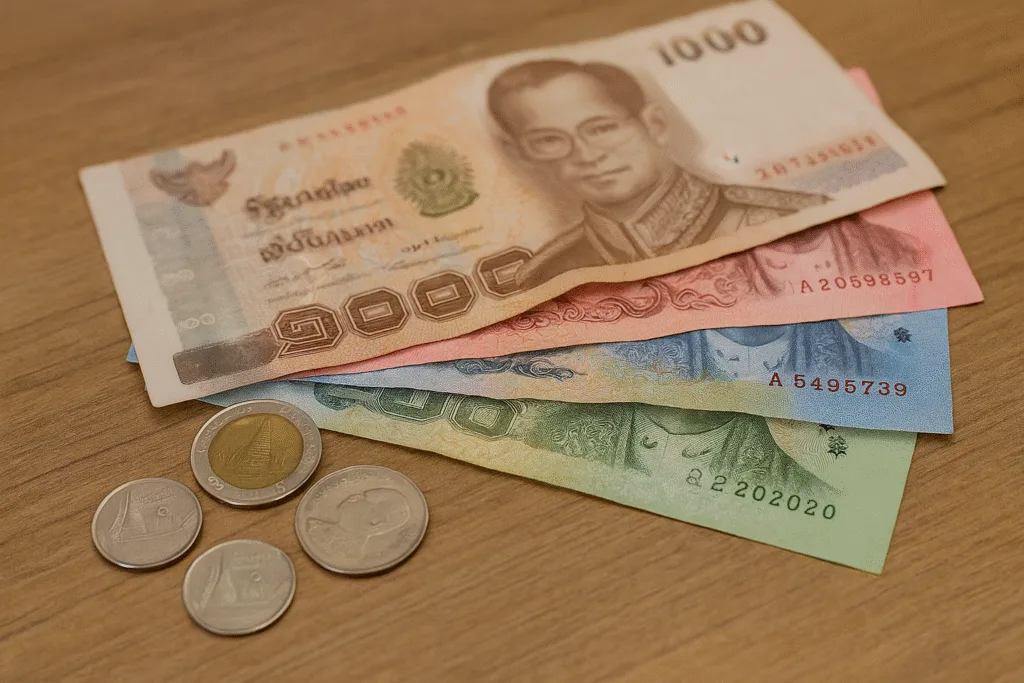
Cost of Living in Phuket
This one really depends on your version of “living.” Phuket isn’t Chiang Mai. Things cost more here, especially if you’re near the beaches or leaning into a more Western lifestyle. But it’s still Thailand. You can live modestly and comfortably without giving up too much, or you can rack up a very real cost-of-living bill that looks suspiciously like a small mortgage in Europe.
If you’re eating Thai food, riding a scooter, and renting a studio away from tourist zones, you can get by on around $900 to $1,200 per month. That’s the barebones-but-pleasant version think fan-cooled apartment, a few good meals out each week, and budget gyms or no gym at all. Rent in older Thai-style apartments or local condos in areas like Chalong or Phuket Town can start around 7,000 to 10,000 THB. Utilities tend to be a little higher than in the north, especially with A/C running. Budget 1,500 to 2,500 THB per month if you use it regularly.
But once you introduce beach proximity, brunches, and a pool view, things scale quickly.
Western groceries, imported wine, or even just regular supermarket trips to Villa Market or Tops can double your food budget. A bottle of halfway-decent wine? Easily 700 to 1,200 THB. Fancy peanut butter or oat milk? You’ll pay for it. Coffee culture is alive and well on the island, but cappuccinos at beach cafés can cost 90 to 130 THB a cup. Not outrageous, but not cheap either if you’re stopping in daily.
A more balanced, digital-nomad-style lifestyle with a one-bedroom near Kata or Rawai, café visits, occasional coworking, scooter rental, and going out now and then usually sits around $1,500 to $2,000 per month. For many remote workers, that’s the sweet spot. It covers comfort without luxury, and you won’t feel like you’re missing out. Co-working spaces are fewer than in Chiang Mai but expect to pay 3,000 to 5,000 THB per month if you want a reliable desk and stable Wi-Fi. Scooter rentals go for around 2,500 to 3,500 THB per month, depending on the model and season.
Couples or long-term expats can stretch their budgets further. A modern two-bedroom condo with a pool and gym in Cherng Talay or near Nai Harn might run 18,000 to 30,000 THB per month, but split between two people, that’s still very reasonable. Living slightly inland, even just 10 minutes away from the beach, makes a noticeable difference in rent.
Long-Term Living in Phuket
Living here changes how you see the island. You stop thinking in terms of day trips and start caring about laundry shops, delivery apps, and where to buy decent shampoo without imported prices.
Your routine shifts:
- Morning swim
- Work from home or café
- Quick trip to the market
- Sunset at your favorite beach
You stop converting prices to your home currency. You know where to get things repaired. You recognize the same guy selling grilled corn every afternoon and you start nodding hello.
It’s not always easy. Rainy season can stretch your patience. Traffic builds up in weird places. Bureaucracy still exists.
But it gets under your skin, in a good way.
Final Thoughts
Phuket isn’t polished. Not everywhere. It’s messy, hot, humid, and uneven. But it’s also beautiful in a way that’s hard to explain. You might hate it for a week. Then miss it for years.
It doesn’t force itself on you. It just waits. If you stay long enough, it becomes something else. Not just a place you visited, but a place you learned how to live.
Related Posts:
